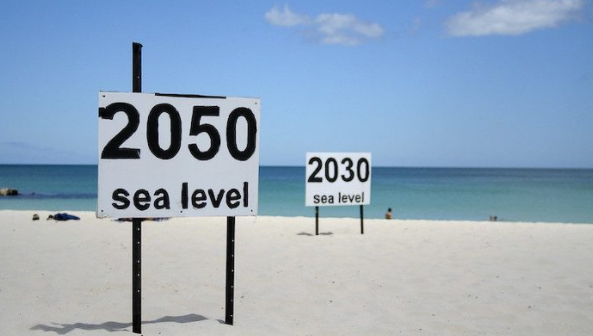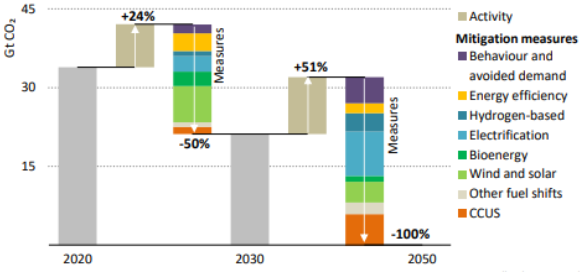The truth is we’re just not getting the job done – yet. Currently, if you did everything we said we would do…we’re still going to see warming of about 3.7 degrees or more.
John Kerry, Joe Biden’s Special Presidential Envoy For Climate
The Dublin Climate Dialogues took place on 19 May, 2021, against the backdrop of insufficient action to mitigate climate change: society as a whole desperately needs to limit the Earth’s warming to no more than 1.5°C within the next decade to avoid mass irreversible damage on a global scale. But even if all signing members of the Paris Agreement were to fulfill today’s current goals on time, it would still not be enough to counteract current damages. And while the world rightly focuses on COVID-19, climate change has resulted in 9 million premature deaths per year, nearly three times more than the pandemic. COVID-19 is immediate; we feel its impact on our lives, society, and economies, while exponentially worsening climate consequences for the global community are predicted to result from a mere 0.1°C increase. Are we the oblivious frog in boiling water?
Why We Aren’t Acting on Climate Change
Katharine Hayhoe (Chief Scientist for the Nature Conservancy and Professor of Political Science, Texas Tech University) introduces two psychological phenomena that help explain our behaviour – psychological distance and solution aversion. In dialogue with Pat Cox (former President of the European Parliament), Professor Hayhoe explains that humans currently view rising global temperatures as an abstract anomaly in comparison to their day-to-day lives. Simply put, psychological distance means that people are more likely to better understandclimate change if if affects them directly. Studies suggest that in many cases, psychological closeness results in more pro-environmental behaviours and attitudes.

Climate change is psychologically distant
(© Yale Program on Climate Change Communication)
Solution aversion is similar: People are more likely to deny problems when they don’t like their solutions. There are two aspects to this phenomenon, both of which impact our response to warming climates. The first is tangible solution aversion, which comprises the changes in lifestyle required to curb individual carbon footprints which we feel in what we eat, how we travel, what and how much we buy and so on. The second is ideological solution aversion and is particularly prevalent in the US, where many citizens have built their identity on politics that often mingle with a specific climate change position. Professor Hayhoe suggests that this is a difficult hurdle to overcome and requires bonding with people over other common topics and disentangling climate change from politics as a whole in order to better communicate its urgency.
 Rising sea levels and coastal erosion are threatening Pacific Island economies(©go_greener_oz)
Rising sea levels and coastal erosion are threatening Pacific Island economies(©go_greener_oz)
It is, however, wrong to focus solely on the economic impact. Mary Robinson (Adjunct Professor of Climate Justice, Trinity College Dublin, Chair of the Elders, and former President of Ireland) and Enrico Letta (Leader of the Italian Democratic Party and former Prime Minister of Italy) emphasise that the urgency of climate change has always been raised by the world’s poorest countries. In addition to economic dangers, we must also consider the ripple effect on issues like gender inequality, intergenerational encroachment, intensified climate refugee waves, industrial, technological and intellectual property imbalances, and insufficient access to natural resources in the southern hemisphere. All these issues are forecast to increase with ongoing global environmental damage.
What Actions Can We Take to Curb Climate Change?
In May 2021, the International Energy Agency published a Roadmap To Net-Zero Economies. To reach net‐zero CO2 emissions by 2050 requires a wide range of layered solutions including (1) energy efficiency, (2) behavioural changes, (3) electrification, and (4) greater use of renewable energy sources and bioenergy, and (5) carbon capture, utilisation and storage (CCUS).

Solar, wind and energy efficiency deliver around half of emissions reductions to 2030
in the NZE, while electrification, CCUS and hydrogen ramp up thereafter
(© IEA, 2021)
Buildings in Europe, as in many advanced economies, have substantially longer lifetimes than less developed countries. By 2050, over half the building stock will still be in use. EU building stock accounts for 40% of the EU’s energy consumption and 36% of its green house gas (GHG) emissions. Net-zero emissions require significant commitments, both psychologically and financially, to the deep renovation of these buildings. The key actions for existing buildings are (i) reducing the demand for heating and cooling via renovation of the building envelope, (ii) using new low-energy consuming equipment in general (and specifically using more energy efficient heating equipment), (iii) increasing uptake and use of renewable energy sources, and (iv) adopting “smart buildings” (European Commission, 2020). RINNO contributes to accelerating the rate of deep renovation in the EU by reducing the time, effort and cost of deep renovation while improving energy performance and stakeholder satisfaction. We do this by designing, developing, and demonstrating a novel open renovation platform for managing and delivering deep renovation projects for residential buildings from planning and design, through to retrofitting, operation and monitoring.


 This project has received funding from the European Union's Horizon 2020 research and innovation programme under grant agreement No 892071.
This project has received funding from the European Union's Horizon 2020 research and innovation programme under grant agreement No 892071.